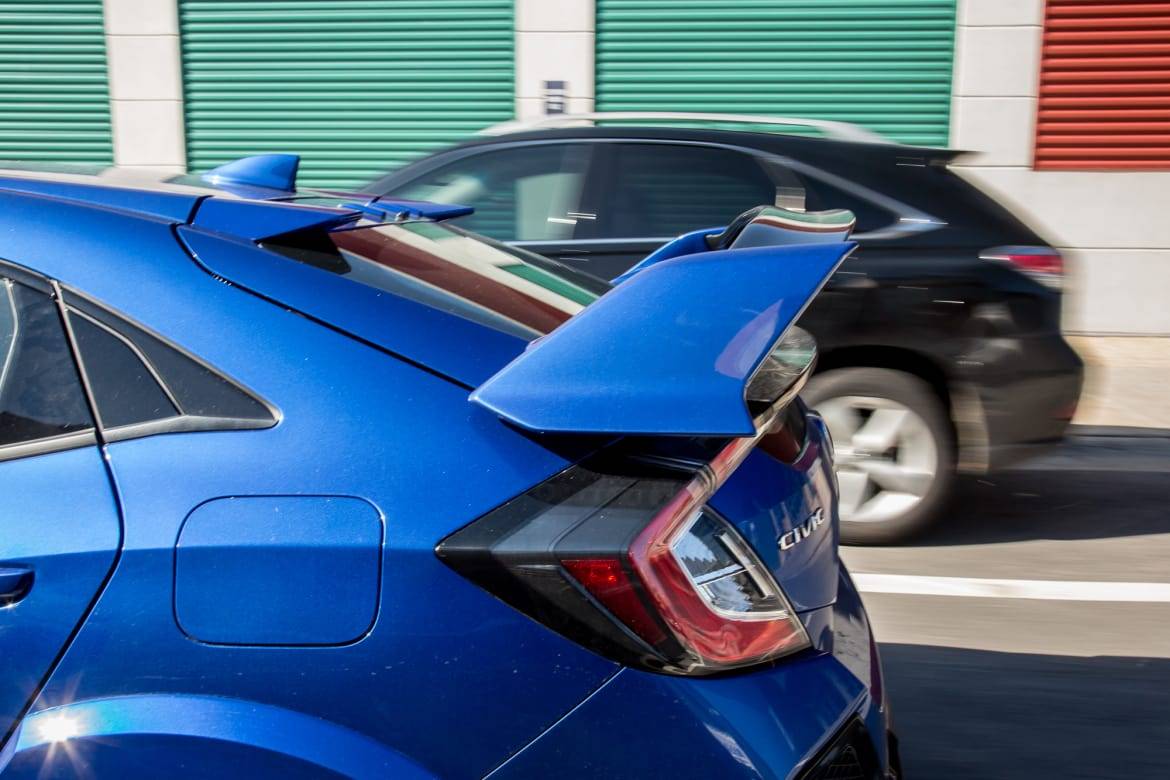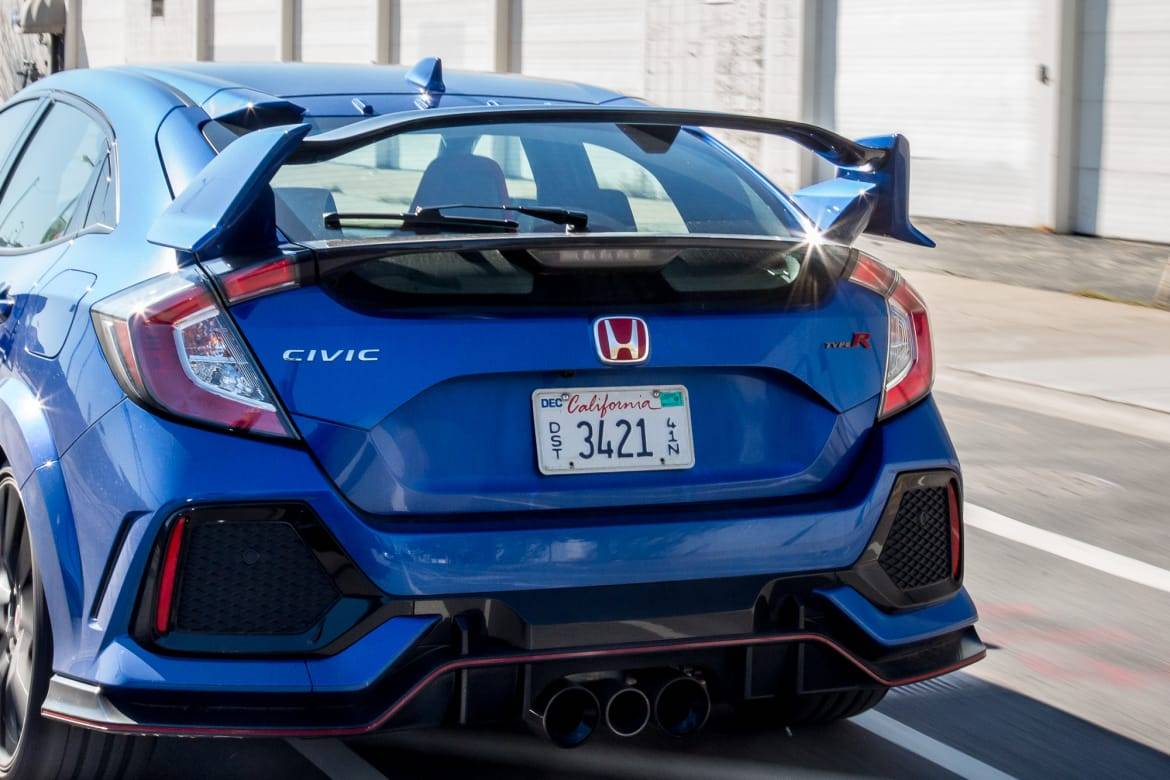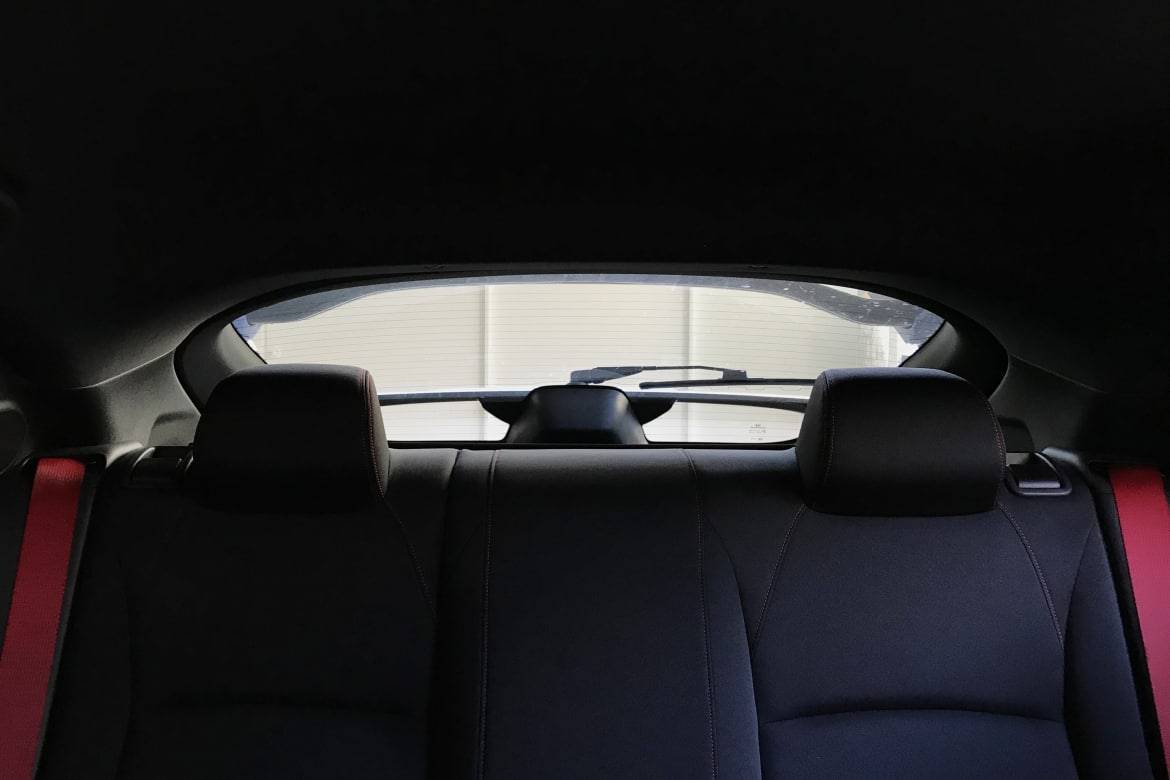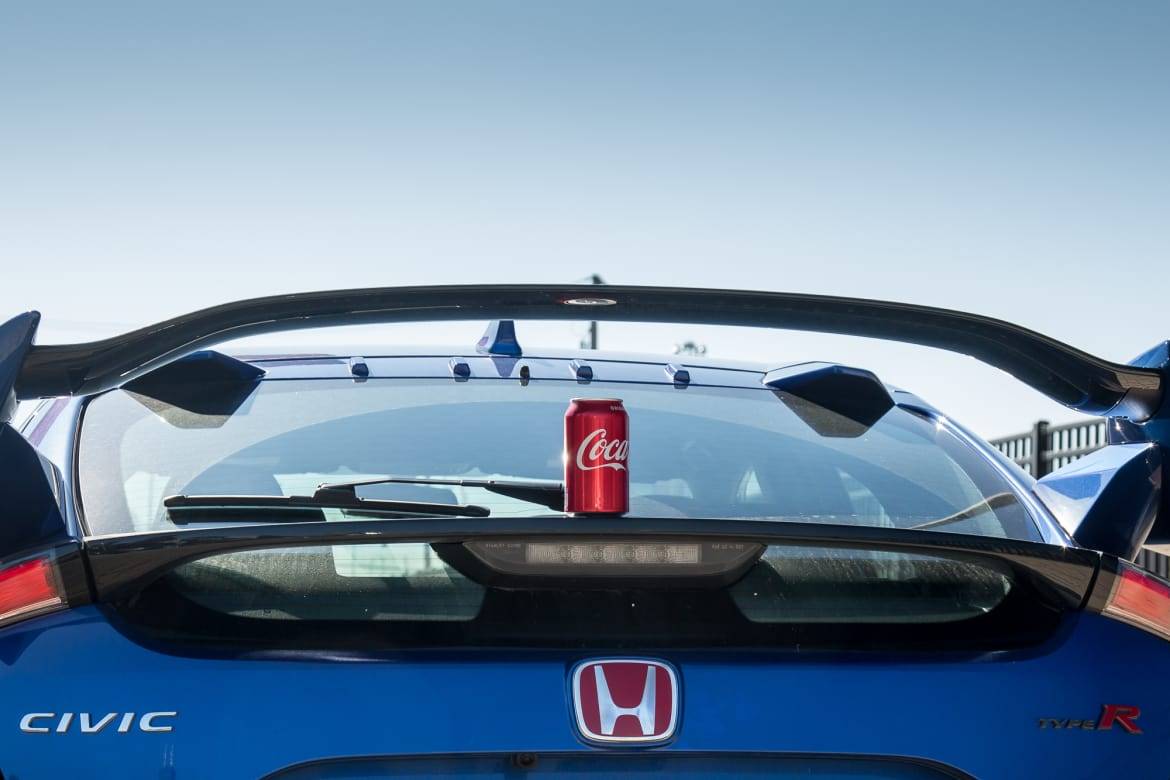2017 Honda Civic Type R: What's Up With the Wing?


CARS.COM — That monstrous spoiler on the back of the 2017 Honda Civic Type R is as much a conversation piece as a wall-sized tapestry of a childhood beagle hung in your living room. Someone will inevitably ask what’s up with the gigantic carpet dog — just like how the question I most commonly fielded after driving the Type R was whether that wing is really a necessary fixture for a front-wheel-drive hatchback like a Civic.
- ${price_badge()}
- ${ami_badge()}
- ${battery_badge()}${ev_report_link()}
- ${hot_car_badge()}
- ${award_badge()}
- ${cpo_badge()}
${price_badge_description}
${ami_badge_description}
The EV Battery Rating is based on this vehicle's current expected range relative to the vehicles expected range when new. ${battery_badge_text}
This vehicle is certified pre-owned, backed by a manufacturer warranty, and typically undergoes a rigorous multi-point inspection to ensure quality and reliability.
This vehicle is currently in high demand given its competitive price, desirable features, and overall condition, and may have a higher chance of selling quickly.
Shop the 2017 Honda Civic near you



The Wing Is Functional
For those who question its form, there’s solace knowing it is, in fact, functional. At 200 kph (124 mph), the 306-horsepower, turbocharged 2.0-liter four-cylinder Civic Type R and its wing are producing 30 kg (66 pounds) of downforce, which plants the rear end, and increases cornering and straight-line stability, according to Rob Keough, senior product planner for the Type R.
Honda engineers developed the wing’s performance in a wind tunnel, but finalized the design after tests on the 12.9-mile Nurburgring North Loop track. There, according to Honda, the Type R set the quickest lap for a front-wheel drive vehicle at 7 minutes, 43.8 seconds.

It Doesn’t Obstruct Visibility Badly
Much to our surprise, the spoiler wing doesn’t block visibility through the rearview mirror like a Subaru WRX STi or the departed Mitsubishi Lancer Evolution (rest in peace; please don’t be reincarnated as an SUV), where those big wings just sat in the middle of the mirror. The Type R’s wing is tall enough at a tick over 9 inches off the hatch that it sits above the mirror’s view.
It’s more noticeable, however, during blind-spot checks where those big, wide uprights obstruct a quick over-the-shoulder glance. The hot hatch’s wing is roughly 58 inches wide from one flared-out tip to the other.

Teamwork Makes the Wing Work
A massive rear wing alone wasn’t enough to create the rear stability the Type R engineering team desired from the winged warrior. There are four vortex generators at the top of the hatchback that help direct airflow over the wing to maximize the aerodynamic effect.
Carbon-Fiber Type R Wing Coming
The current Type R wing is made from a plastic composite, but an accessory wing will soon be available through Honda Performance Development that’s made from lightweight carbon fiber. Keough says the weight reduction is significant enough that Honda might have to recommend different strut supports so the hatch doesn’t open too quickly with the lightweight carbon fiber wing attached. And to continue with the Type R’s red-infused highlights, the accessory wing will have a red weave infused into the carbon-fiber construction.
What Happens If the Wing Is Removed?
I struggled with how much I loved driving the Type R versus how goofy I think I looked because of that wing; my preference is the stealthier appearance of the Volkswagen Golf R or Ford Focus RS.
Asked what would happen if removed, Keough answers: “I think in normal driving, you’re not really going to notice. It’s there for the track. Most of these things come into effect above 55 or 65 mph. Mostly around town, you wouldn’t notice the difference; it’s really there for very high-speed stability and track duty.”

Managing Editor Joe Bruzek’s 22 years of automotive experience doesn’t count the lifelong obsession that started as a kid admiring his dad’s 1964 Chevrolet Corvette — and continues to this day. Joe’s been an automotive journalist with Cars.com for 16 years, writing shopper-focused car reviews, news and research content. As Managing Editor, one of his favorite areas of focus is helping shoppers understand electric cars and how to determine whether going electric is right for them. In his free time, Joe maintains a love-hate relationship with his 1998 Pontiac Firebird Trans Am that he wishes would fix itself. LinkedIn: https://www.linkedin.com/in/joe-bruzek-2699b41b/
Featured stories




